|
  |
|
Page 2 |
Newsletter 133 Summer 2021 © Hampshire Mills Group |
Otterton Watermill
Ruth
Andrews
Photos by Ruth and Keith Andrews
|
|
Otterton
Mill is the lowest mill on the River Otter in Devon,
and has a long history. The heyday of the mill was
in the mid-19th century when the miller was John
Uglow. Flour was delivered as far away as Plymouth,
by coasting vessels from Topsham, as well as to
Exmouth, Budleigh Salterton, and the local
villages. After that it gradually declined until
the middle of the 20th century when it fell into
disrepair, and parts of the complex were used as a
cattle market and slaughterhouse. Milling finally
stopped in 1959, after which the buildings were used
for grain storage. The mill was restored in 1977.
|
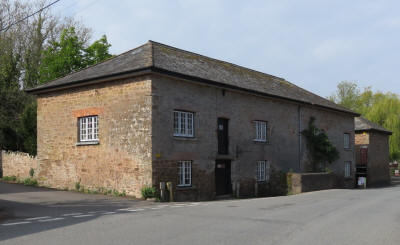 |
|
It is now in
the hands of Chris and Carol Wright who took over at
the end of 2015. As well as grinding and selling
wholemeal flour, the mill and ancillary buildings
house a bakery, restaurant, artists’ workshops, and
gallery. The mill itself is crammed with an
enticing selection of saleable goodies, and
therefore functions as a shop, in which you can
freely view the mill machinery.
For more
information see
ottertonmill.com;
if
you pick ‘explore’
there
is an excellent video of the mill in operation and
the milling process.
Regarding
the mill operation, water enters the mill via a
tunnel under the road where it flows onto two 3m
diameter breastshot Poncelet-type wheels. Each
wheel powered two pairs of millstones at opposite
ends of the building, but only the righthand set has
been restored and is used for milling. That wheel
has curved iron buckets whereas the unused lefthand
one has angled wooden planks in place of buckets.
|
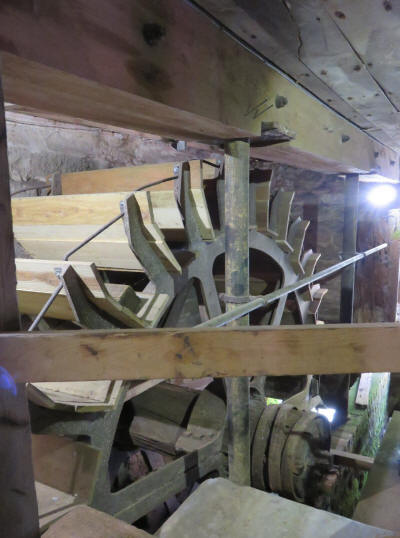 |
 |
|
There
are 3 control wheels for the sluices, the outer ones
raising the slanted gates and the middle one on a
bypass channel.
On the
stones floor only one pair of stones are in use for
milling, and they are made as flourproof as
possible, with perspex covers over the hopper and a
fairly new tun.
The stones in use have unusual radial curved
dressing.
|
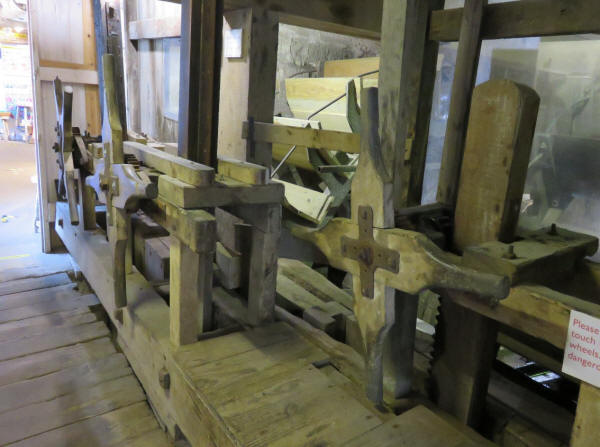
|
|
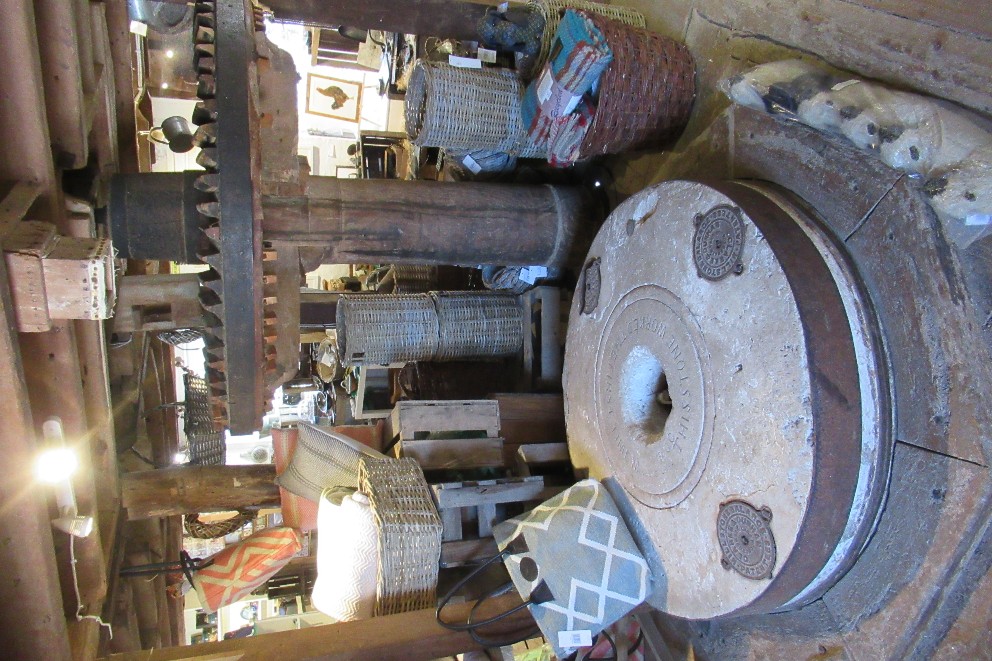
The two
French burr millstones installed by John Uglow are
on display and have inscriptions:
this stone
worked the first time march 28th 1859
and
this stone
worked first time, tis true may 1st 1862.
Notice the 4
patent balance boxes by Clarke & Dunham.
Downstairs,
the flour spout has been removed and is only put in
position when the mill is working. In contrast, the
unrestored side of the mill has been colonised by
the shop, as you can see on the right.
|
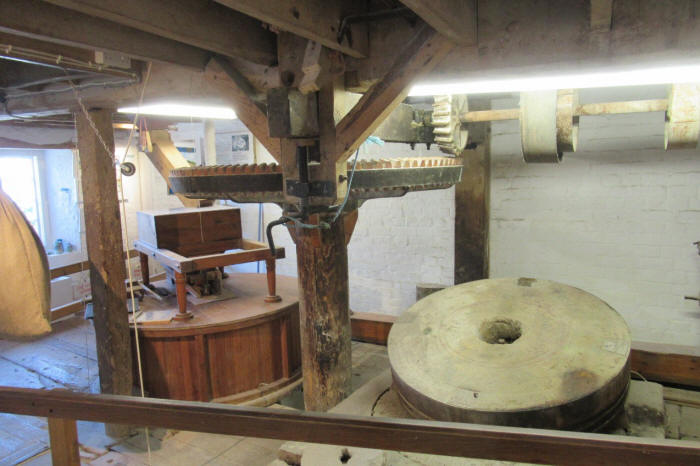
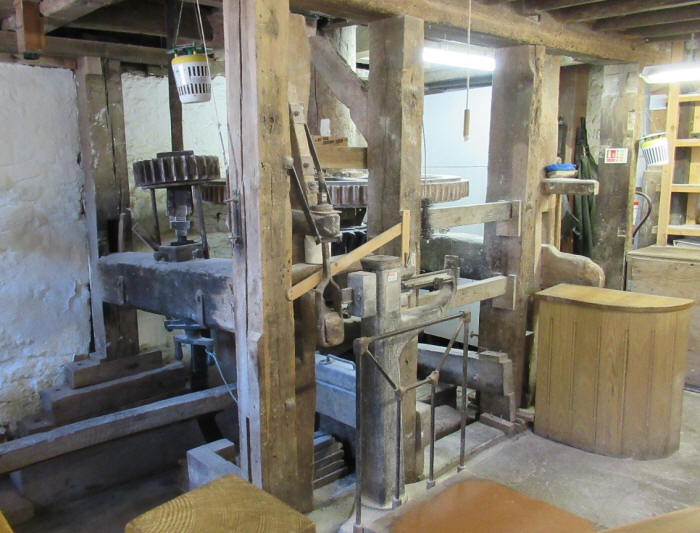 |
  |
|
|
